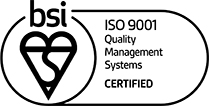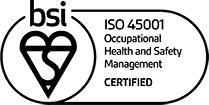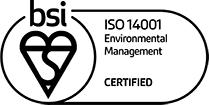At Nikwax, our products are developed, manufactured and filled in the UK. Our aftercare products are designed to be used in the home, where cross contamination of food and air is a real possibility, whilst our industrial products are designed to remove harmful chemicals from supply chains, and offer high performance, with low environmental impact.
The Nikwax Chemical Management System (CMS) was implemented in 2021 to ensure our workers, consumers and the environment were protected from exposure to harmful chemicals. It goes above and beyond the legal requirements to ensure harmful substances are not used in the production of Nikwax products.
The Nikwax CMS is designed to be transparent and open source. We wish to share our Chemical Management System Policy Manual , including all the principles we use to select safer chemistry and how we have integrated this into our ISO 9001 audits, to encourage other companies to develop and implement their own transparent, safer methodologies to chemical processing.
The system is designed to deliver on the concept of a “VAMMOS” system – Verifiable, Attainable, Meaningful, Measurable and Open Source.
Verifiable: Our CMS is a policy, which has its own annual review, built into our ISO 9001 audits. This means that the policy is audited in its entirety every year, and our continued ISO accreditation is dependent on conformance. Through ISO 9001 and auditing, Nikwax can demonstrate that we do, what we say we do.
Attainable: Nikwax already set a high bar, in terms of excluding hazardous chemistry such as PFCs, but it is important that we continue to set goals to reduce our impact. It is important that whilst we strive raise the bar, that these goals are achievable. This is true for other businesses too – set ambitious, but achievable goals to move us all towards safer chemistry.
Meaningful: The goals we set, and our principles are meaningful, and not just “Green Washing”. Some organisations and accreditations that claim to demonstrate sustainability, still approve the use of substances such as PFCs – i.e. they are not meaningful at any level. It is essential that we, and other businesses can demonstrate that our goals and principles are meaningful.
Measurable: We can quantify and demonstrate that Nikwax products do not contain hazardous substances through 3rd party waste water testing at our manufacturing facility, verified through our ISO 9001 audit.
Open Source: We share our principles for selecting safer chemistry, along with our method for developing this system and how it integrates with ISO. We want to encourage other businesses, especially SMEs, to adopt practices to reduce hazardous chemistry in a way that isn’t burdensome for them.
The Nikwax CMS is based around the following 5 principles
We have put in place procedures to ensure that when we develop new products or update existing ones all potential new chemicals are screened for their toxicological effects and to ensure they don’t appear on our MRSL (Manufacturing Restricted Substance List). We do this using a platform which provides chemical hazard assessments completed by a team of trained toxicologists. We use these assessments to make informed decisions about what chemicals to use in our products. We also take into consideration the source of the chemicals to ensure we only use chemicals from sustainable sources.
Our use of chemicals is regulated by the European REACH Legislation. But, as with many environmental issues, we feel the Law does not always go far enough and can be slow to react to new information. In addition to compliance with the chemical restrictions defined by REACH, our own team of scientists have developed a stricter list based on a precautionary approach and will add new chemicals to the MRSL if evidence emerges that a chemicals may be a concern.
The Nikwax MRSL adopts the Zero Discharge of Hazardous Chemicals (ZDHC) MRSL, and all known per- and polyfluoroalkyl substances (PFAS or otherwise known as PFCs) as identified by the US Environmental Protection Agency (EPA).
The ZDHC is an industry initiative created by key players within the textile and leather goods industry. It was set up in response to the Greenpeace Detox campaign which highlighted the environmental impact of the textile and leather manufacturing industry, and in particular 11 groups of chemicals that were commonly used and particularly harmful. They called for the textile and leather goods industry to phase out these chemicals by 2020. The ZDHC MRSL was developed to include these chemicals and go further adding other chemicals of concern. The MRSL they have put together is comprehensive and evolving.
A copy of the Nikwax MRSL statement can be found here.
We know exactly what chemicals we have onsite at all times and keep accurate records of their quantities and storage locations. These inventories include everything from cleaning chemicals, to the small lab samples, to the tons of bulk chemicals used in the manufacture of our products.
All staff that handle chemicals in their day-to-day roles are given comprehensive chemical handling training when joining the company. Further training is given annually to ensure they and the environment around the factory are safe.
Every chemical that comes onto site is COSHH (Control of Substances Hazardous to Health) assessed before any staff member can use it. These assessments look at how the chemical is being used and in what quantities and provides information about any precautions that are needed when handling the chemical.
We have procedures in place to ensure all chemicals are stored in designated locations and are clearly labelled with the correct information and hazard warnings. This means we know exactly what we have on site and where it is located and we minimize the risk of accidental release of chemicals that could harm our workers or the surrounding environment.
To ensure nothing hazardous gets out (and that nothing hazardous got in in the first place), we carry out testing on the wastewater leaving our manufacturing facility. Wastewater samples are collected and sent to a ZDHC accredited laboratory and screened for all the substances on the ZDHC MRSL (which is part of the Nikwax MRSL). We also send additional wastewater samples off for fluorine analysis which would identify the presence of any of the thousands of different PFAS chemicals.
All waste materials from our manufacturing facility and laboratory are separated according to the type of waste and stored in designated locations until disposal with a licensed waste disposal specialist.
Our chemical management system is audited annually as part of our ISO certificated Integrated Management System. Our ISO auditor is the British Standards Institution (BSI).



You can access a copy of the CMS Policy Manual here
Please just tell us whether you’re a consumer, journalist, or from industry and you can download the policy straight away.
The Nikwax team would be delighted to speak to you about how we went about setting up the CMS.
Please drop us a line at cms@nikwax.co.uk
